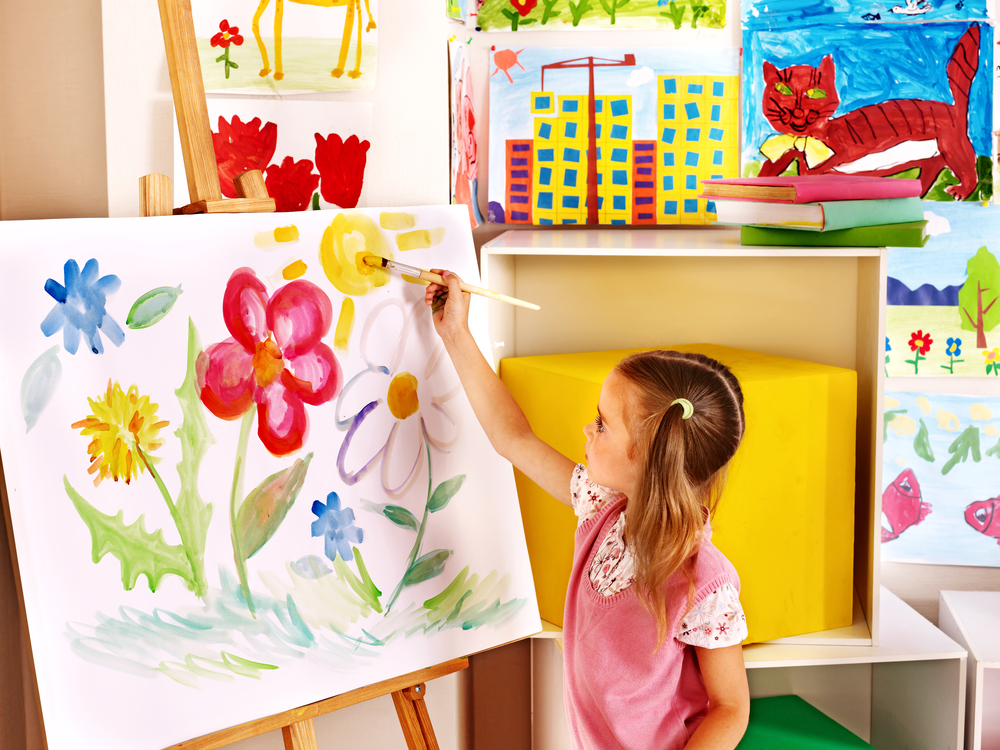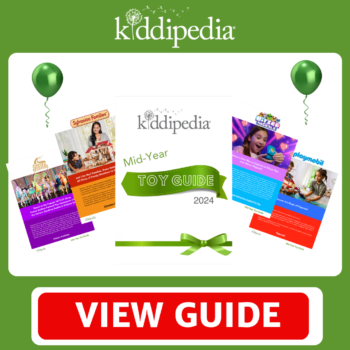Do you have any memories from preschool? Many remember wearing an art smock and the smell of paint as you stood in front of an art easel with a paintbrush in hand.
Have you ever thought of why parents treasure their children’s paintings and drawings so much?
Art is the unrestricted exploration that helps children form connections in their brain. Above all, art connects us to our heart. A painting from a child is a little glimpse into the window of their soul, deep I know but it’s the truth. The reason parents value and love their children’s paintings so much is that it is a little piece of them, a snapshot of the child’s feelings and viewpoint of the world, for that moment, from their eyes. No wonder we find it hard to part with them.
The art of creating through the imagination of a child is limitless. The only limit is the timeframe that they are children and have access to their boundless and incomprehensible imagination.
Kiddipedia is thrilled to announce our partnership with Tailored Artworks. Sharron Tancred, Director and Customised Artwork Specialist talks to us about the importance of art in childhood:
What are the benefits of creative arts in relation to child development?
Two thoughts. Firstly, art is a visual thinking process. To paint or draw, a child needs to think about what they want to see on their bit of paper. Adults can struggle to conceive of an idea and visualise it, so just trying this right brain activity is an important part of a child’s development. If they can imagine a picture to paint, then they will be able to see themselves achieving great things and to see how she wants her bedroom to look, see how he wants his new haircut! Want to go the next step, I help kids visualise their success with Kids Fantasy Face Portraits. Learning to see in ones mind is incredibly helpful for career and daily life!
Secondly, the creative arts is about self-expression. Why is self-expression important, after all, they can talk and cry and scream, so why would art or acting or music help this? The creative arts are about learning the skills to express a more profound belief, emotion, experience of their own or another’s in a beautiful and point making way. Children can gain great self-confidence through any of the creative arts.
For instance, my 13-year-old daughter is now far more socially confident through becoming an actress and my 15 old daughter has found confidence through publishing her stories online and gaining a following! When I art direct kids, even kids with disabilities, in my one on one Private Art Workshops to paint a gallery-quality artwork which they sign, and being tailored to their home’s décor is hung pride of place, parents tell me they still drag visitors to see their artwork years later! Nothing else, except perhaps sports I think, comes close to the creative arts for building a child’s confidence.
What skills can art teach children?
Aside from the above skills of visualising, self-expression and self-confidence, art can teach a child about the science of colour, the rules of design and in some kids, engage an appreciation of interior décor.
When I am helping adults with their art and décor, most have little understanding of colour and adorn themselves, and their homes, in merely neutral or natural colours for fear of making mistakes, which is pretty sad! There’s power in learning how colour works to beautify your home life and how you feel when you go out – trust me, I have a Cert in Colour Psychology. And, this appreciation can begin in childhood.
For kids, just the act of painting a large artwork, with big bold strokes encourages their bravado. Whether it looks great in the end comes down to design knowledge or art direction, but the act itself is fulfilling; it’s their canvas, their decisions, their willpower to finish something, consider it and work at it. Art teaches children the skill of bravado, design, patience and perseverance.
How would you describe the benefits art and colour psychology gives to children, especially those with dyslexia?
Wow! Big question! Let’s break it up. Hanging art in your home, and I mean real art, not prints, but large art with textures and real visible passion coming through, adds humanity and warmth and passion. Texture is an awesome design tool to warm your family life. Large artworks create impressive, heartfelt focal points that ground a living area and give it purpose. If your family loves the beach, put them at the beach every day with art – it will feel like a holiday and engage memories! If you and your kids love boating trips and bright, loud colours, then art painted energetically will take you they and create energy and happiness in your home, every day.
Colour psychology is a soft science revered for millennia across cultures, in religion, public service, and business, advertising and even, in daily life. Pink is traditionally used to give little girls energy, but I prefer to suggest yellow which encourages a love of problem-solving, learning, expresses self-confidence, positivity and a feeling of happiness. Blue, as used by the police and judicial systems, communications and safety companies, can be used in art, décor and clothing to encourage your child to communicate. Teenagers love black, for its sense of control and dealing from they know, not what they are told. Black means protectionism, which you can battle with colours like blue, or red for masculinity and energy.
Alternatively, green! Did you know that green is the most loving colour on the planet, to calm them and connect them with a love of the nature, the earth, humanity and animals! Green, is about the heart and giving, of one’s time and money, so art and décor that features green is most excellent for your home and your child’s emotional development and their connection to nature and community.
Now, dyslexia. Undiagnosed till 4 years ago when 46, I am so glad I now know that I have dyslexia as it solves all the riddles and has given me confidence! Dyslexia varies from person to person, evident in the various talents of famous people with dyslexia (LinkedIn editorial) from Da Vinci to Einstein to Picasso to Steve Jobs and Richard Branson. What’s the common denominator that you can use for your child?
Did you know that dyslexia is also known as ‘The Gift’. Forget the disadvantages and focus on The Gift! Dyslexia provides a greater than average right brain ability to visualise and merge real life with imagined concepts, see it clearly, problem solve the difficulties and focus on producing the real outcome with great passion and drive. People with dyslexia think like geniuses in this regard. We are obsessed with what we are good at.
Kids with dyslexia will daydream, zone out and go off thinking about highly specific things of interest to them. Einstein is best known for a period of “scientific thinking’ or visualising, which resulted in his theory of relativity. So, dyslexics can see and problem solve outside of the box, a talent not to be underestimated. 35% of dyslexics will become entrepreneurs: inventors, philosophers, actors, artists, etc. They can be the world’s great thinkers and creative minds and yet, bullied at school and belittled for being behind in a system not tailored to their needs.
As a voice for dyslexia, I’m very passionate about parents seeing the empowerment they can encourage in their child if they lean towards becoming an artist of any kind, and how the creative industries can be an excellent career choice and not the traditionally perceived downward slide into poverty. Feel free to connect with me on Facebook and chat about it!
What tips do you have for parents who want to develop their children’s artistic skills?
You can’t beat professional quality paints like Atelier Interactive for their longevity and vibrancy of colour. If they want to study art at school, let them. Learning art is the gateway into the design industries: graphics, animation, set/fashion or industrial design, architecture and even philosophy. Look at art from a broader perspective and allow your child to find their way.
Kids who find their passion will find their drive and confidence. Those who lack passion won’t survive in the creative industries – so that makes it simple for you! If you notice your child shows passion, encourage it with extra art classes, materials, a good space to work in private and verbal encouragement. Take them to art shows, museums and try to learn about art and how it’s expression has evolved with that of humanities development from cave art, to the radical changes expressed in the early 19th century as a result of the industrial age to modern art and back again to an appreciation of nature and history! We really have come full circle! Art is fascinating and opens a world of history and beauty that you can share with your child and learn from your child as a voice for the future and a voice from within their very Soul.
How can art help children with special needs?
Well, all of the above. Occasionally, I will work with kids who are autistic. Aside from expression and confidence building, creating something of their own art can help kids with special needs in finding an activity that they can pursue, perhaps professionally, in the comfort of home. Even elderly, sitting in a wheelchair, can paint a watercolour anywhere they go!
For kids with autism, you may find they are attracted to the colour orange which relates to gut instinct and creativity. Let them paint with it, put it in their spaces, let them wear it. Kids who have little voice can express feelings and messages through their art. Provide your child with ample resources, sketchbooks, pencils, paints and fun painting tools from rags to sponges to bits of rope to make interesting marks with. When I am working with kids in Private Art Workshop, there is a huge array of tools that keep them engaged as I change colours and we build their composition. So, start collecting!
I paint murals for aged care and dementia. Providing disabled kids who are restricted to set living spaces with atmospheric and interactive spaces using murals could help with more engaging places of play that will encourage their imagination. Hand-painted murals for disabled kids can be used to conceal spaces you don’t want them to see, like exit doors, and also to create the illusion of more space, build a theme and engage the emotions through colour psychology. I always say art is just paint and ideas, so, put on your thinking cap, think more than a print and think atmosphere!
What can the Kiddi-Community expect from you?
Well, I’m going to write some great blogs over the next 12 months on a range of topics including those mentioned above.
As a professional artist, graphic designer, illustrator, interior decorator who has blended all these to become a Customised Artwork Specialist, you can expect… unique! As a parent of 2 high achieving girls, you can expect some great, well-founded insight. As a dyslexic artist and designer, you can expect a few spelling errors but I hope you expect to see improved corporate and residential spaces, and learn about art and the rules of interior design! You can expect professionalism with a very fresh and innovative viewpoint…like my Real Art Kitchen Splashbacks that your kid could help paint; now that’s unique. Ha! There aren’t many people who do what I do, so, yes, unique is what you can expect from me.
If I was a genie and could grant you three wishes, what would they be? (and why?…)
OOOOOH! I’d love a genie!
1. My kids achieve their dreams; nothing could make me happier.
2. The phones ring with wonderful people wanting to create beautiful, meaningful spaces with me; because it makes me happy yet again, and…
3. I’d like to find an international art consultant who can arrange an art exhibition of my works, manage commissions and clients so I have more studio time and a chance for my own self-expression which would be the icing on the cake for my long career and make me happy indeed!
Thank you Genie!









